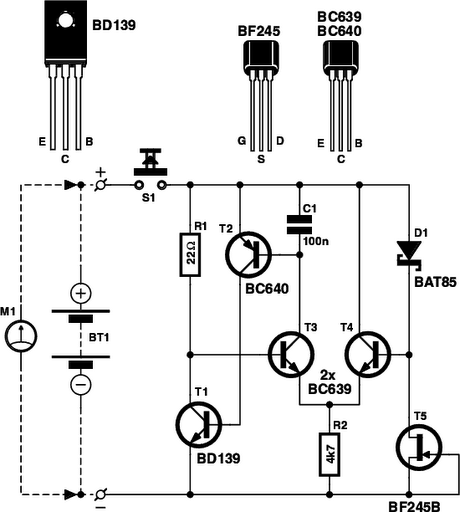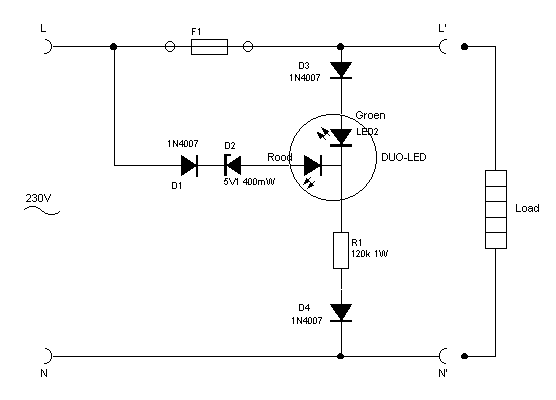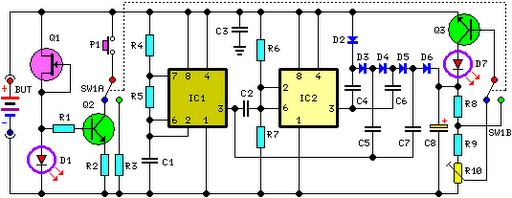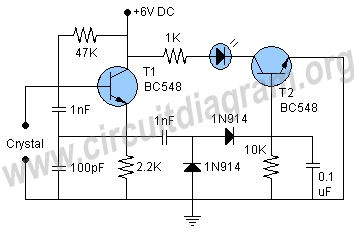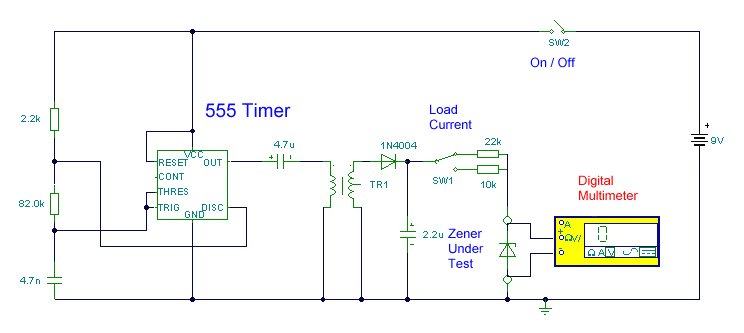
Latching Continuity Tester
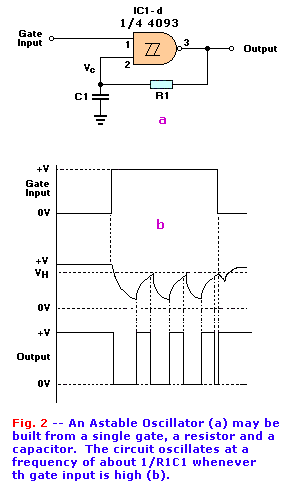
Latching Continuity Tester. Source: Eldon L. Knight, Tony van Roon A continuity tester is essential on every service bench for testing cables, PC boards, switches, motors, plugs, and jacks.
A latching continuity tester is a specialized electronic device designed to verify the integrity of electrical connections and circuits. It operates by sending a low-voltage signal through the component under test and determining whether the signal is able to pass through without interruption. This tool is particularly useful in diagnosing faults in cables, printed circuit boards (PCBs), switches, motors, plugs, and jacks.
The device typically includes an LED indicator that illuminates when continuity is detected, providing a clear visual signal to the user. The latching feature allows the tester to maintain its state, indicating continuity even after the test leads have been removed from the circuit. This is especially beneficial for troubleshooting, as it allows the technician to inspect the circuit without needing to hold the tester in place.
In terms of circuit design, a latching continuity tester may consist of a power source, often a battery, a resistor to limit current, a transistor or relay for switching, and an LED for indication. The power source energizes the circuit when the test leads are connected, while the resistor ensures that the current remains within safe limits to prevent damage to sensitive components. The transistor or relay acts as a switch, latching the circuit in the "on" state when continuity is detected, and the LED provides immediate feedback.
This device is indispensable in various applications, including electronics repair, maintenance, and assembly, ensuring that connections are secure and functional before proceeding with further work. Its compact design and straightforward operation make it a valuable tool for any technician or engineer involved in electronic testing and troubleshooting.Latching Continuity Tester. Source: Eldon L. Knight, Tony van Roon A continuity tester is a must on every service bench for testing cables, pcboards, switches, motors, plugs, jacks,. 🔗 External reference
A latching continuity tester is a specialized electronic device designed to verify the integrity of electrical connections and circuits. It operates by sending a low-voltage signal through the component under test and determining whether the signal is able to pass through without interruption. This tool is particularly useful in diagnosing faults in cables, printed circuit boards (PCBs), switches, motors, plugs, and jacks.
The device typically includes an LED indicator that illuminates when continuity is detected, providing a clear visual signal to the user. The latching feature allows the tester to maintain its state, indicating continuity even after the test leads have been removed from the circuit. This is especially beneficial for troubleshooting, as it allows the technician to inspect the circuit without needing to hold the tester in place.
In terms of circuit design, a latching continuity tester may consist of a power source, often a battery, a resistor to limit current, a transistor or relay for switching, and an LED for indication. The power source energizes the circuit when the test leads are connected, while the resistor ensures that the current remains within safe limits to prevent damage to sensitive components. The transistor or relay acts as a switch, latching the circuit in the "on" state when continuity is detected, and the LED provides immediate feedback.
This device is indispensable in various applications, including electronics repair, maintenance, and assembly, ensuring that connections are secure and functional before proceeding with further work. Its compact design and straightforward operation make it a valuable tool for any technician or engineer involved in electronic testing and troubleshooting.Latching Continuity Tester. Source: Eldon L. Knight, Tony van Roon A continuity tester is a must on every service bench for testing cables, pcboards, switches, motors, plugs, jacks,. 🔗 External reference
Warning: include(partials/cookie-banner.php): Failed to open stream: Permission denied in /var/www/html/nextgr/view-circuit.php on line 713
Warning: include(): Failed opening 'partials/cookie-banner.php' for inclusion (include_path='.:/usr/share/php') in /var/www/html/nextgr/view-circuit.php on line 713
